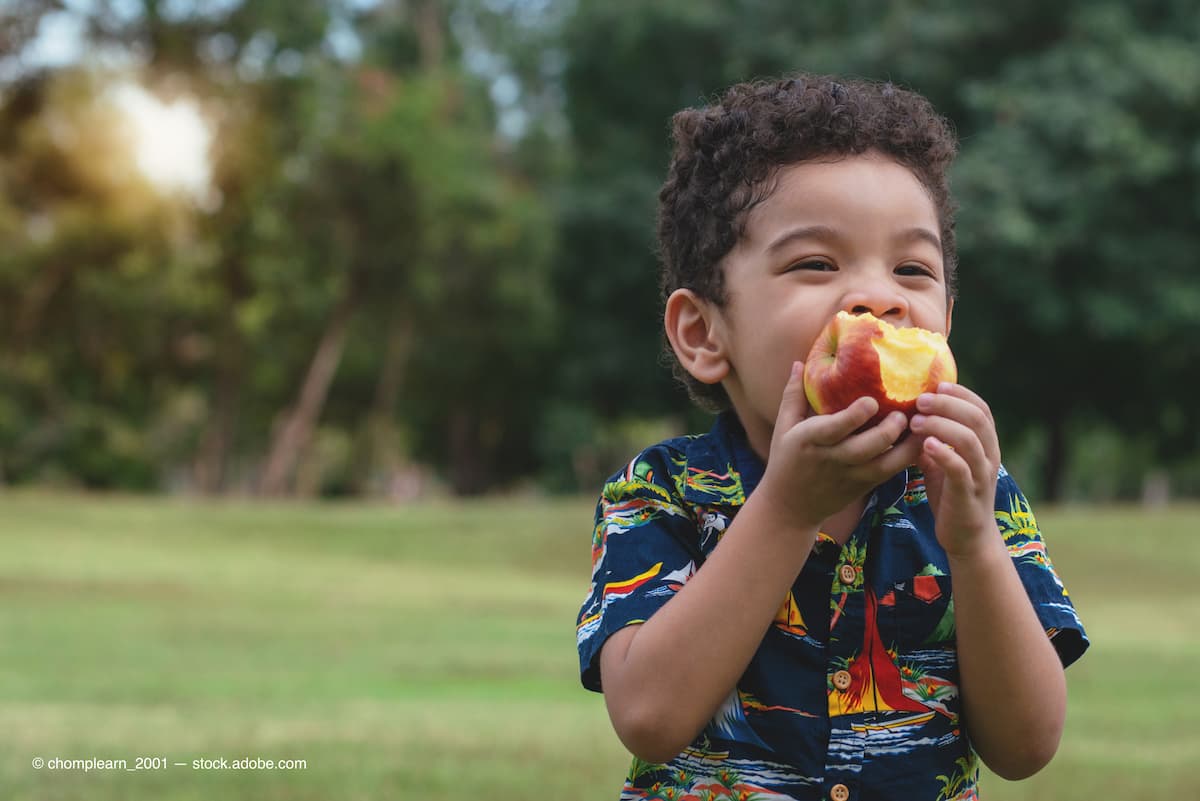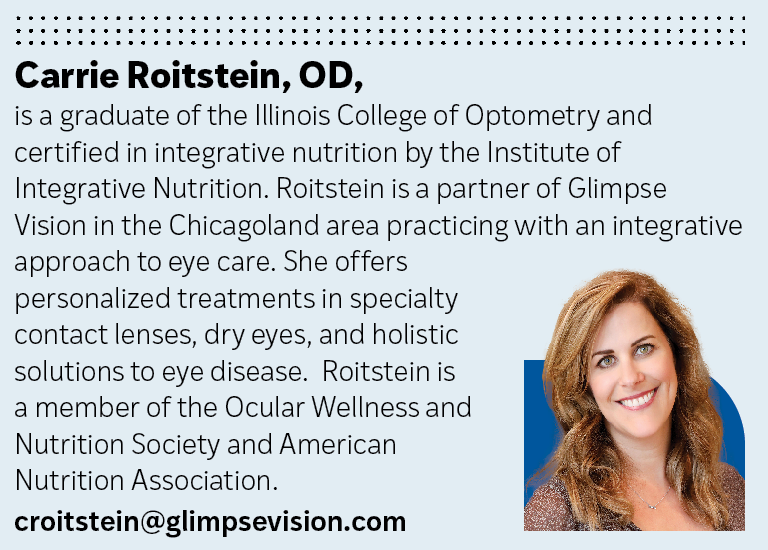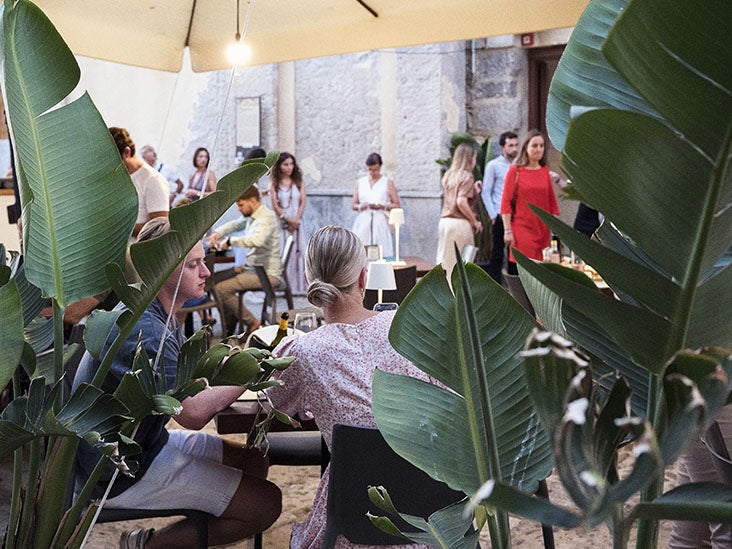
Looking at pediatric eye care through a holistic lens


Let’s approach the topic of eye safety in the broader scope concerning children. One would typically imagine sports goggles and polycarbonate lenses, but what if you expand your mindset to embrace a wellness approach—a holistic approach that will foster long-term benefits to the health of children throughout all stages of life? A focus on wellness can lead to constructive dialogue translating into favorable results.
It is a lot simpler to achieve compliance wearing polycarbonate lens materials vs eating more greens, but the current practice model needs to shift if we wish to see healthier pediatric vision today and in the future.
The Oxford Languages definition of safety is “the condition of being protected from or unlikely to cause danger, risk, or injury.” Let’s take the word “safety” beyond eyewear and consider all aspects of life that we are trying to protect children from: obesity, myopia, eyestrain from devices, UV exposure, and so much more. To look at the bigger picture, we should challenge the scope of eye care so that professionals are proactively reducing the risk of eye disease with a holistic approach to health.
Most patients do not associate chronic disease with vision; therefore, it continues to be a challenge to connect the dots for patients. But if education begins at an early age, we can shift the attitude toward health of a younger generation. Wellness and preventive care can only benefit children in the long run and even deliver some positive incremental effects within the community.
This article centers around children’s wellness with 3 main topics: UV light, nutrition, and myopia. Today we have the tools to treat eye disease from a holistic perspective and start making changes at an early age.
Sunny days and eye safety
We’ll begin with the simple yet complex topic of damage to the eyes originating from exposure to UV light. Both UVA and UVB radiation in the wavelengths from 280 to 400 nm attack early and don’t reveal the evil consequences of cataracts, skin cancer, and macular degeneration until much later in life. Living in areas with snowy ground cover nearly doubles UV exposure while sand and water also increase exposure; therefore, emphasizing preventive measures outdoors should be a quick topic mentioned at any age—especially for children who spend a lot of time outside.
Many adults have heard about these eye conditions secondary to UV exposure and are often worried about receiving a diagnosis of any of them. Encouraging early habits and suggesting simple solutions like wearing a hat, applying sunblock, and investing in sunglasses are a few easy tips that can prevent vision loss down the road. In my practice, every child receives a pair of nonprescription sunglasses with the completion of the exam. In prescription glasses, stress the importance of a lens containing UV-blocking technology. This sets the stage knowing the important value of prevention and eye health.
Educate your team to explain the UVA/UVB ratings when sunglasses are purchased, carrying your message to the optical dispensary area. This is another chance for patients to hear about UV blocking options in different lens materials. If you do not have a dispensary, consider adding UV technology to your prescriptions.
Nutrition and learning
Let’s move to the role of nutrition in holistic eye care.
For children and adolescents aged 2 to 19 years in 2017-2020,1 the prevalence of obesity was 19.7{a5ceed037b574a4d8c6b44a0a7290437cee40655417128da3b56d864fe64414f} and it affected about 14.7 million individuals. Since there is a known connection between the gut and brain, this is a topic that falls right into our lap with our eyes an extension of our brain.
While they may seem awkward initially, the conversations become easier with time. Parents need to hear that their child’s diet can lead to issues with vision and learning and eventually to chronic disease, which further effects eye health.
Since many school systems do not have the budget for optimal nutrition and with the prevalence of busy working households, we see rising cases of ocular surface disease, accommodative stress, and headaches linked to a poor diet. We don’t have to be experts in nutrition but as eye care professionals we can certainly share the importance of balanced nutrition (eating colorful food) and the connection to learning and vision. There will be no drastic changes overnight but by drawing attention to the importance of nutrition for good eyesight, we can anticipate changes over time.
Parents are not looking for dietary recommendations during an eye exam, but a simple mention of eating less sugar and fewer processed foods with more attention to whole foods and eating colors can start the dialogue. If a child’s symptoms are not explained by refractive error or an eye condition, consider a referral for further medical testing. As a health care professional, you can suggest a possible link to poor nutritional habits that deserves more attention.
Wellness and myopia
As we have seen a rapid rise of myopia worldwide over the last generation, it is expected that half of the world’s population will be myopic by 2050.2 What we continue to learn is that genetics, nutrition, and lifestyle habits could play a role in the risk of progression. This is 1 condition that all eye care professionals need to be ready for; however, if myopia management does not fit your practice model, consider a referral for further evaluation. Children deserve the necessary treatment and latest technology to attack this growing myopia epidemic.
First, discern if 1 or both parents has a myopia diagnosis, as genetics significantly increases the child’s risk of developing myopia. Also consider that environmental factors and lifestyle changes, such as increased use of electronic devices and decreased time spent outside, are associated with the higher prevalence of myopia.3 One study considers diet (higher saturated fat and cholesterol intake) as a source.4 Plan on discussing nearsightedness early with solutions to stay ahead of the game. This is the perfect opportunity to prescribe outdoor activity to children in an attempt to reduce time on devices. Attack nutrition, wellness, and myopia management by simply asking kids to move more and eat better.
On the topic of myopia and consequences from prolonged device usage, we cannot forget blue light exposure. The pandemic brought new attention to blue light glasses. Everyone knows the term but few understand the truths behind the possible damage.
Ask detailed questions about lifestyle and device use to best understand the visual demand of each patient, then present the facts: Blue light can lead to eye strain, eye fatigue, and sleep disruption. One study revealed that up to 75{a5ceed037b574a4d8c6b44a0a7290437cee40655417128da3b56d864fe64414f} of young children have their own tablets5 and most infants are estimated to start handling mobile devices during the first year of life.6


With the immense number of children using devices, suggest long-term habits by encouraging breaks following the 20-20-20 rule—every 20 minutes, gaze 20 feet away for 20 seconds—and shift light settings to the dark mode (dark background vs light). These habits will become increasingly important as children continue to be exposed to blue light at very young ages because we will not know the extent of the damage until they are older.
While the exposure to blue light is important for well-being, alertness, and cognitive performance during the day, chronic exposure to low-intensity blue light directly before bedtime may have serious implications for sleep quality, circadian phase, and cycle durations.7 Let’s make it easy to adapt good habits to improve wellness and learning while remaining focused on the long-term benefits.
Worried that these conversations may take away from time with other patients? No need to worry, because these patients are returning for years to come from the education that empowers them to initiate holistic habits. I cannot begin to tell you how many referrals I gain in my office because of parents sharing experiences within the community.
Aristotle said, “Good habits formed at youth make all the difference.” This is a chance to differentiate, educate, and grow your practice through relationship building. It’s the perfect time to make a mark on how eye care is viewed today.
References
1. Stierman B, Afful J, Carroll MD, et al. National Health and Nutrition Examination Survey 2017–March 2020 prepandemic data files—development of files and prevalence estimates for selected health outcomes. CDC. June 14, 2021. Accessed January 2, 2023. https://stacks.cdc.gov/view/cdc/106273
2. Holden BA, Fricke TR, Wilson DA, et al. Global prevalence of myopia and high myopia and temporal trends from 2000 through 2050. Ophthalmology. 2016;123(5):1036-1042. doi:10.1016/j.ophtha.2016.01.006
3. Morgan IG, Ohno-Matsui K, Saw SM. Myopia. Lancet. 2012;379(9827):1739-1748. doi:10.1016/S0140-6736(12)60272-4
4. Lim LS, Gazzard G, Low YL, et al. Dietary factors, myopia, and axial dimensions in children. Ophthalmology. 2010;117(5):993-997.e4. doi:10.1016/j.ophtha.2009.10.003
5. Kabali HK, Irigoyen MM, Nunez-Davis R, et al. Exposure and use of mobile media devices by young children. Pediatrics. 2015;136(6):1044-1050. doi:10.1542/peds.2015-2151
6. Rideout V. The Common Sense Census: Media Use by Kids Age Zero to Eight. Common Sense Media; 2017.
7. Wahl S, Engelhardt M, Schaupp P, Lappe C, Ivanov IV. The inner clock-Blue light sets the human rhythm. J Biophotonics. 2019;12(12):e201900102. doi:10.1002/jbio.201900102





